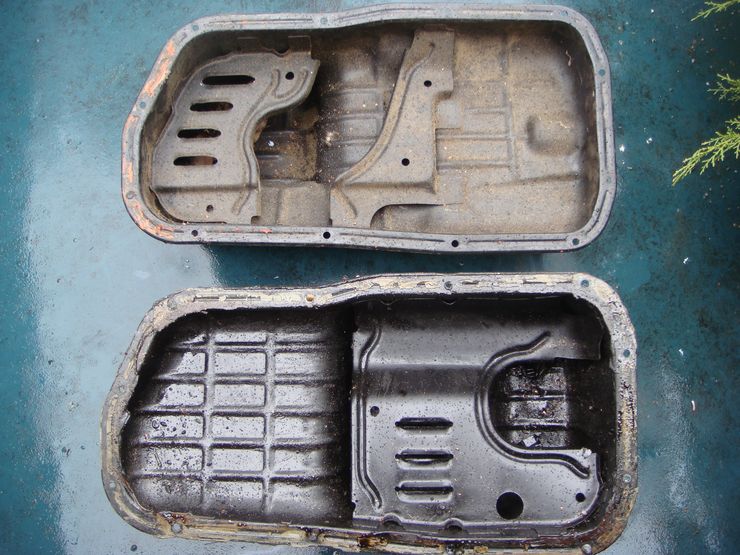Waste or rescue: is it worth putting an enlarged oil pan
- July 11, 2023
- 0
The tandem of a 1.5-liter turbo gasoline engine and a continuously variable transmission – the most popular “schedule” of a modern foreign car – does not look reassuringly
The tandem of a 1.5-liter turbo gasoline engine and a continuously variable transmission – the most popular “schedule” of a modern foreign car – does not look reassuringly

The average market price of a new car is currently 2.6 million rubles. Moreover, in the showrooms, for the most part, the “Chinese”, equipped with exactly the same one and a half liters of “turbo gasoline” and CVTs, flaunt. And neither the real source, nor the allowable load level, nor the build quality of these units we do not know. No operating experience.
But we studied well the European “turbines”, which gave quite decent power indicators with a small volume. However, they also did not live long, if the car owner did not begin to “apply hands” in advance. The main reason for the “death” of both the engine and the gearbox is lack of oil. And that is why many warned off the problem by installing an enlarged sump. Both on the engine and on the gearbox.
The above technology has one significant drawback – the reduction of ground clearance. But what a plus! Motor oil is needed not only for lubrication, but also for cooling the engine, so modern heat-loaded engines will only say “thank you” for more lube. The pallet itself, hanging under it, will inflate better and thereby “refresh”.
It makes sense that a larger amount of lubricant circulating through the internal combustion engine will withstand the load more easily, cope better with its tasks, and also allow the driver to add it less often when the engine “eats”. So the improved crankcase certainly has positive aspects.
In addition, the “custom-made basin” is usually fitted with anti-overflow baffles, thanks to which you will not encounter seconds of oil starvation during a sharp maneuver, and is also welded from a higher quality metal than the original. Here the experience of exploiting the “Japanese” prone to rot already suggests.
In short, there is something to think about when looking through bulletin boards. And it will not be a revelation if soon there will be a large number of “non-original” oil pans for the newly minted “headliners” of the Russian car market.

The average market price of a new car is currently 2.6 million rubles. Moreover, in the showrooms, for the most part, the “Chinese”, equipped with exactly the same one and a half liters of “turbo gasoline” and CVTs, flaunt. And neither the real source, nor the allowable load level, nor the build quality of these units we do not know. No operating experience.
But we studied well the European “turbines”, which gave quite decent power indicators with a small volume. However, they also did not live long, if the car owner did not begin to “apply hands” in advance. The main reason for the “death” of both the engine and the gearbox is lack of oil. And that is why many warned off the problem by installing an enlarged sump. Both on the engine and on the gearbox.
The above technology has one significant drawback – the reduction of ground clearance. But what a plus! Motor oil is needed not only for lubrication, but also for cooling the engine, so modern heat-loaded engines will only say “thank you” for more lube. The pallet itself, hanging under it, will inflate better and thereby “refresh”.
It makes sense that a larger amount of lubricant circulating through the internal combustion engine will withstand the load more easily, cope better with its tasks, and also allow the driver to add it less often when the engine “eats”. So the improved crankcase certainly has positive aspects.
In addition, the “custom-made basin” is usually fitted with anti-overflow baffles, thanks to which you will not encounter seconds of oil starvation during a sharp maneuver, and is also welded from a higher quality metal than the original. Here the experience of exploiting the “Japanese” prone to rot already suggests.
In short, there is something to think about when looking through bulletin boards. And it will not be a revelation if soon there will be a large number of “non-original” oil pans for the newly minted “headliners” of the Russian car market.
Source: Avto Vzglyad
Donald Salinas is an experienced automobile journalist and writer for Div Bracket. He brings his readers the latest news and developments from the world of automobiles, offering a unique and knowledgeable perspective on the latest trends and innovations in the automotive industry.